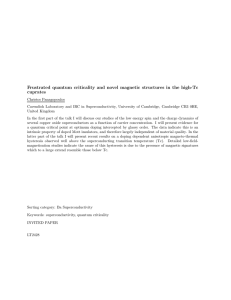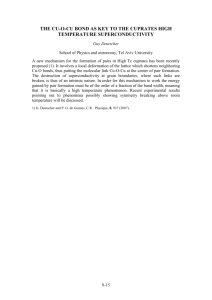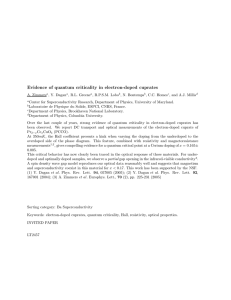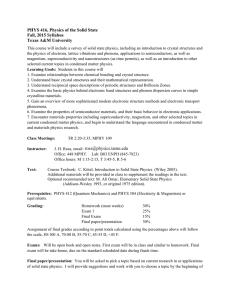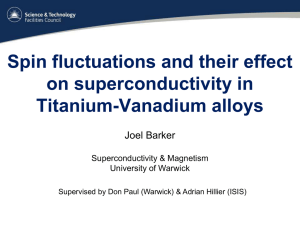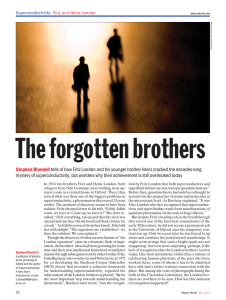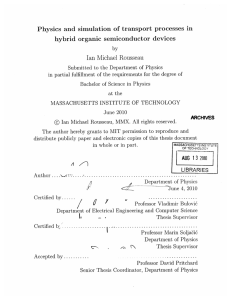Syllabus for Physics 211B
advertisement
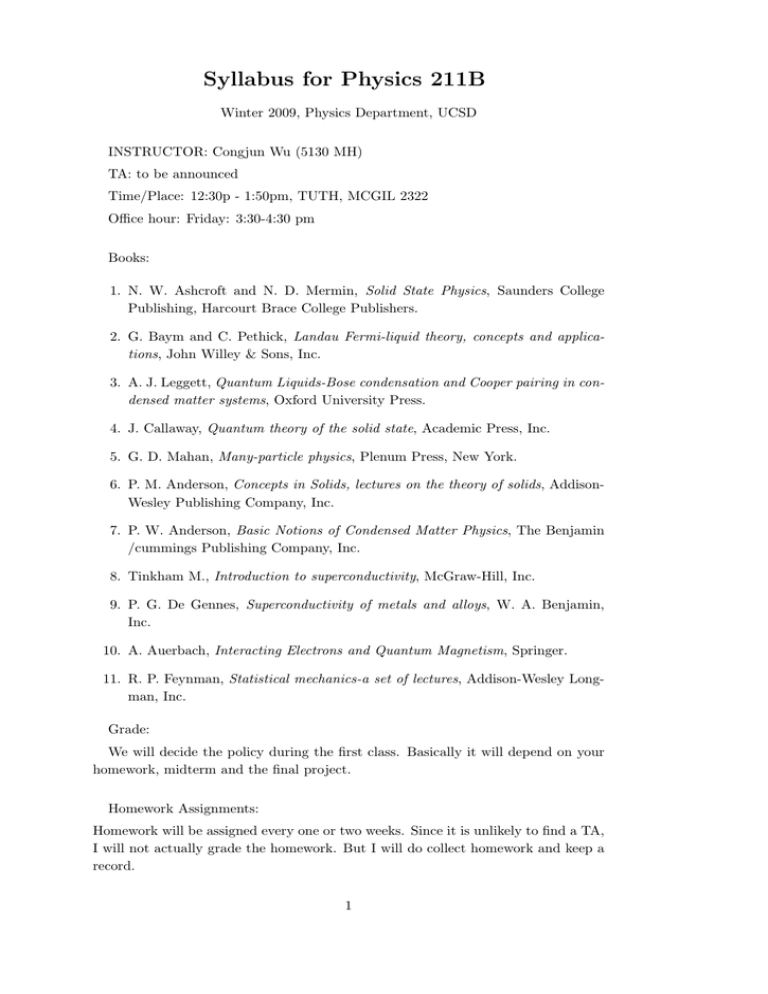
Syllabus for Physics 211B Winter 2009, Physics Department, UCSD INSTRUCTOR: Congjun Wu (5130 MH) TA: to be announced Time/Place: 12:30p - 1:50pm, TUTH, MCGIL 2322 Office hour: Friday: 3:30-4:30 pm Books: 1. N. W. Ashcroft and N. D. Mermin, Solid State Physics, Saunders College Publishing, Harcourt Brace College Publishers. 2. G. Baym and C. Pethick, Landau Fermi-liquid theory, concepts and applications, John Willey & Sons, Inc. 3. A. J. Leggett, Quantum Liquids-Bose condensation and Cooper pairing in condensed matter systems, Oxford University Press. 4. J. Callaway, Quantum theory of the solid state, Academic Press, Inc. 5. G. D. Mahan, Many-particle physics, Plenum Press, New York. 6. P. M. Anderson, Concepts in Solids, lectures on the theory of solids, AddisonWesley Publishing Company, Inc. 7. P. W. Anderson, Basic Notions of Condensed Matter Physics, The Benjamin /cummings Publishing Company, Inc. 8. Tinkham M., Introduction to superconductivity, McGraw-Hill, Inc. 9. P. G. De Gennes, Superconductivity of metals and alloys, W. A. Benjamin, Inc. 10. A. Auerbach, Interacting Electrons and Quantum Magnetism, Springer. 11. R. P. Feynman, Statistical mechanics-a set of lectures, Addison-Wesley Longman, Inc. Grade: We will decide the policy during the first class. Basically it will depend on your homework, midterm and the final project. Homework Assignments: Homework will be assigned every one or two weeks. Since it is unlikely to find a TA, I will not actually grade the homework. But I will do collect homework and keep a record. 1 Class Schedule Lecture 0: Review of single-electron physics; 1. Interacting electron gas Lecture 1: Hartree-Fock approximation; Lecture 2: Random phase approximation, plasmon, and dielectric function; Lecture 3: Linear response, screening, Friedel oscillation; Lecture 4: Density functional theory and local density approximation. 2. Landau Fermi liquid theory Lecture 5: Quasiparticles, interaction functions, and the molecular field approach; Lecture 6: Stoner ferromagnetism, spin waves, and Pomeranchuk instabilities; Lecture 7: Boltzmann transport, zero sound, and conservation laws. 3. Quantum magnetism Lecture 8: Heisenberg model, Holstein-Primakoff method, spin waves (ferromagnetic and antiferromagnetic), and spontaneous symmetry breaking. Lecture 9: An overview of quantum magnetism: Nagoka ferromagnetism, Marshall sign rule, Lieb-Mattis theorem, Mermin-Wagner theorem, and Haldane conjecture. 4. Optical properties Lecture 10: Polariton and phonon-photon interaction; Lecture 11: Wannier exciton, and exciton in coupled quantum-wells. 5. Electron-phonon (e-ph) interaction Lecture 12: e-ph interaction in ionic crystals: Fröhlich Hamiltonian, large polaron and small polaron; Lecture 13: e-ph interaction in metals: Bohm-Staver formula, effective electronelectron interaction, and electron self-energy. 6. Superconductivity Lecture 14: Phenomenology of superconductivity, London theory, off-diagonal long range order; Lecture 15: BCS theory of superconductivity, gap equation, the pseudospin picture, Bogoliubov-de Gennes method; Lecture 16: Thermodynamic quantities of superconductivity, Tc , specific heat, spin susceptibility, superfluid density; Lecture 17: Ginzburg-Landau theory, Josephson effect, Ambegaokar- Baratoff relation. Lecture 18: Electromagnetic response. 2
